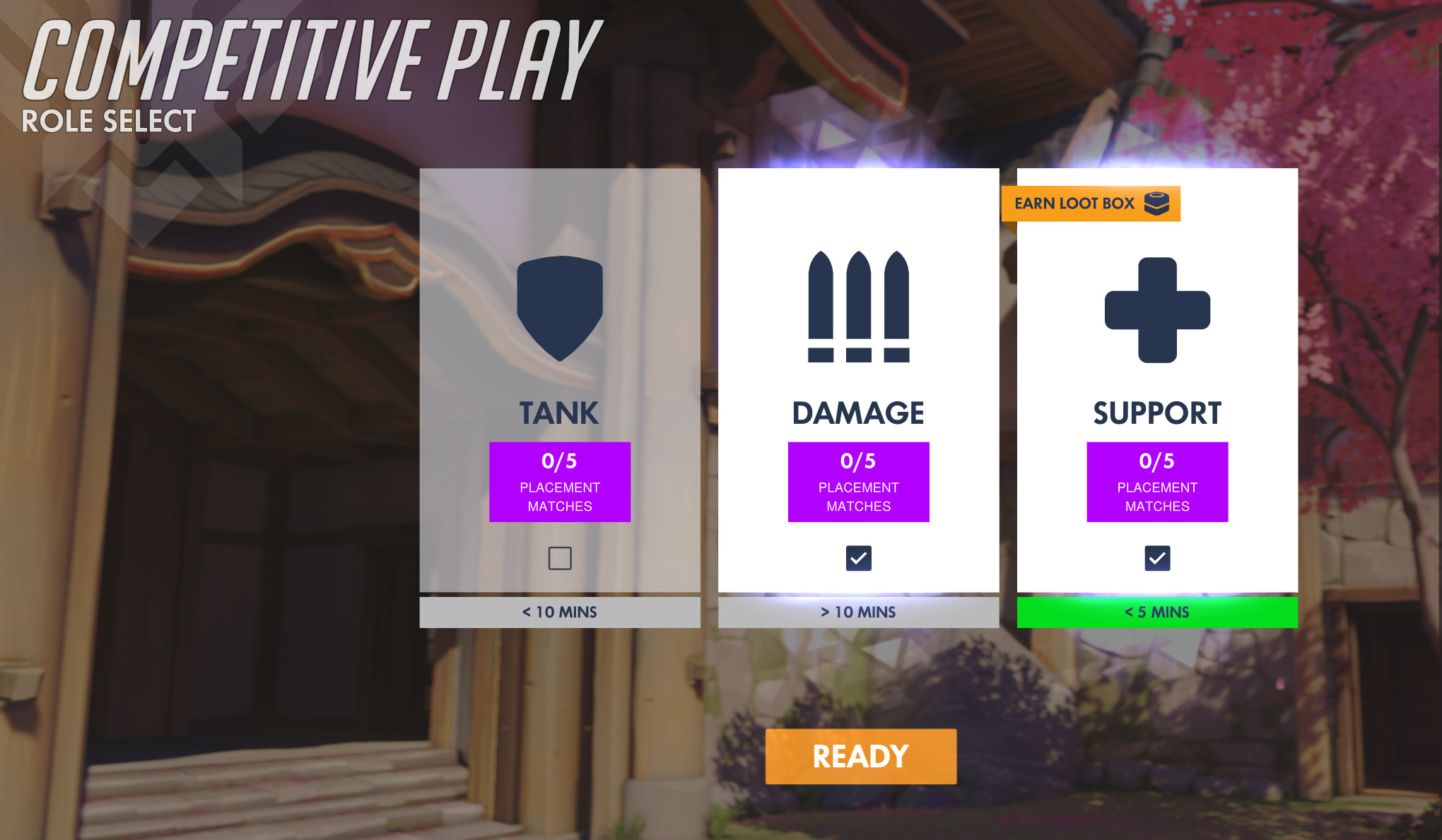Today Blizzard announced a major change to the way Overwatch will be played. The game is introducing a Role Queue system, and with it a 2-2-2 role lock. Instead of freeform character selection, players in most modes of play will be forced to form their six-person team out of two tanks, two supports, and two DPS heroes.
"Currently in Quick Play and Competitive Play, a lot of important decision-making happens in the 40 seconds before a match even begins, as everyone selects their heroes and responds to others’ role choices," Blizzard said in the announcement. "It’s not uncommon for players—who may all have different goals and play styles—to feel tension, pressure, disappointment, or even hostility as a team composition comes together. The Role Queue system is designed to help take the edge off this process, ultimately leading to matches that feel fairer and more fun, where players are in roles that they want to be in."
With Role Queue, you no longer queue up for matchmaking and then determine your team composition at the hero select screen. Instead, you choose a role (tank, support, or damage) and queue into that specific role. You'll then be matched with other players, forming a team of two apiece, much like how MMO games match players into parties of one tank, one healer, and multiple DPS.
Once in a game, you're free to choose any hero within your chosen role, but you can't swap to a different role mid-game. In other words, if you've queued up as a Tank, you can change from Reinhardt to Roadhog or Orisa without issue, but you couldn't swap over to Tracer or Brigitte until the next game.
Role Queue will be implemented in both Quick Play and Competitive play. Each role will have its own individual queue, and players' skill rating will be specific to that role. Players will be able to see estimated wait times for each queue, and in some cases the game will offer incentives for playing an in-demand role.

"We believe that Role Queue will improve match quality, give players more control over their gameplay experience, and provide more positive social experiences between teammates," Blizzard said.
Due to the 2-2-2 lock, Blizzard will also be adjusting some heroes' kits to better fit the game's new structure. Most prominently, the hybrid tank/healer Brigitte—one of the most controversial heroes and largely considered the cause of the GOATS meta—has been adjusted to provide more overall healing, while lowering her survivability.
The biggest gaming news, reviews and hardware deals
Keep up to date with the most important stories and the best deals, as picked by the PC Gamer team.
This is the biggest change to Overwatch's core structure since the Blizzard implemented the one hero per team limit, which eliminated hero stacking—that is, rolling out the gate with two or three Bastions, for example. Role Queue will launch for Quick and Competitive play on September 1 following a two-week "beta season" that will run from August 13 to September 1. The 2-2-2 lock will be implemented in Overwatch League with Stage 4, which starts on July 25.
The change is no doubt controversial, but will hopefully be good for the long-term health of Overwatch.
Role queuing and a 2-2-2 lock are two of the most-requested features among the Overwatch community. The need for a 2-2-2 lock is largely in response to the "GOATS" meta, a strategy that uses three tanks and three supports (typically Reinhardt, Zarya, and D.Va paired with Brigitte, Lúcio, and Zenyatta). GOATS has become the dominant strategy on both the Overwatch competitive ladder as well as by the pros in Overwatch League.
The change is no doubt controversial, but will hopefully be good for the long-term health of Overwatch. The Overwatch meta has been stagnant for nearly a year, and players are eager for the opportunity to once again play flashy DPS heroes like Tracer, Genji, and Widowmaker. The way new heroes are categorized will have lots of meaning within this new paradigm.
Blizzard says the Role Queue system has been in development for more than a year. "As you’re playing, please bear in mind that this is a brand new skill rating system—you shouldn’t compare it directly to your previous SR, and it may take a while for your role-specific ratings to properly adjust," Blizzard said.
As the former head of PC Gamer's hardware coverage, Bo was in charge of helping readers better understand and use PC hardware. He also headed up the buying guides, picking the best peripherals and components to spend your hard-earned money on. He can usually be found playing Overwatch, Apex Legends, or more likely, with his cats. He is now IGN's resident tech editor and PC hardware expert.


